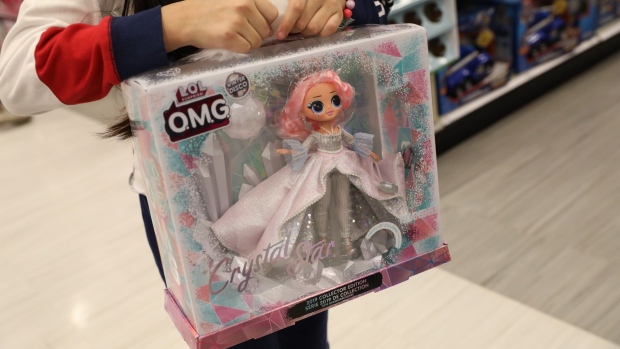Jun 11, 2021
How YouTube Unboxing Videos Helped Kids Take Over the Toy Industry
, Bloomberg News

(Bloomberg) -- About five years ago, MGA Entertainment was a middling toymaker struggling for relevance. And then one night founder Isaac Larian stumbled across a growing fad on YouTube generating millions of views: iPhone unboxing videos.
“I was frankly shocked and flabbergasted,” said Larian in the latest episode of System Shock, a series from Bloomberg Quicktake. “Why would anyone buy an iPhone, take it home and show it on the camera?”
There were also toy unboxing videos—thousands of them. MGA quickly pivoted and launched a toy line with unboxing at its core: L.O.L. Surprise. The first items were miniature dolls (and their accessories) encased within plastic orbs that look like Christmas ornaments. The company then handed out L.O.L. Surprise to the kids (and adults) making the unboxing videos.
Embracing YouTube creators proved to be a deft move as the toy, and its many layers of packaging, was a hit with the unboxing generation. The videos generated millions of views and spurred kids to do their own unboxing, only reinforcing the play pattern. By the end of 2018, the L.O.L. brand had eight of the top 10 best-selling toys in America, according to NPD group, giving MGA another hit line to rival the earlier phenomenon of its Bratz dolls. And last year L.O.L. content on YouTube earned 5.1 billion views, Tubular Labs said.
Behind the success of L.O.L. is a confluence of events that upended the toy industry. It started about a decade ago, when kids turned away from television to mobile devices for entertainment. That threatened an industry that had been relying on television to fuel its growth ever since Mattel pioneered marketing to kids in the 1950s with ads during the Mickey Mouse Club.
With tablets replacing television sets in the early aughts, ratings fell at kid networks such as Nickelodeon, while YouTube boomed. The first unboxing videos gained traction around this time and by 2013 videos of kids opening Legos and Furby dolls were flourishing on the platform. While the videos might have seemed dull to adults, they hit on a core play pattern of discovery, according to Nancy Zwiers, the former chief marketing officer for toymaker Spin Master.
“It just seemed kind of bizarre,” Zwiers said in the episode. “But then when I started thinking about exploration and discovery as a core play pattern, it started to make sense.”
Desperate to connect with kids, toymakers flooded YouTube creators with money to promote products in their videos. That brought more creators and eyeballs, which led to bigger paychecks. Now kid YouTube stars are media titans in their own right. Take Ryan Kaji, the star of the Ryan’s World YouTube Channel, which has nearly 30 million subscribers. He’s had a toy line in Walmart, a Nickelodeon TV show and been a balloon in the Macy’s Thanksgiving Day parade.
“YouTube has created a revolution, not an evolution, in the way kids and families consume video content,” Chris Williams, CEO of Pocketwatch, a media company that works with kid YouTube stars, said in the piece. “And that extends into how they view toys and play.”
©2021 Bloomberg L.P.





